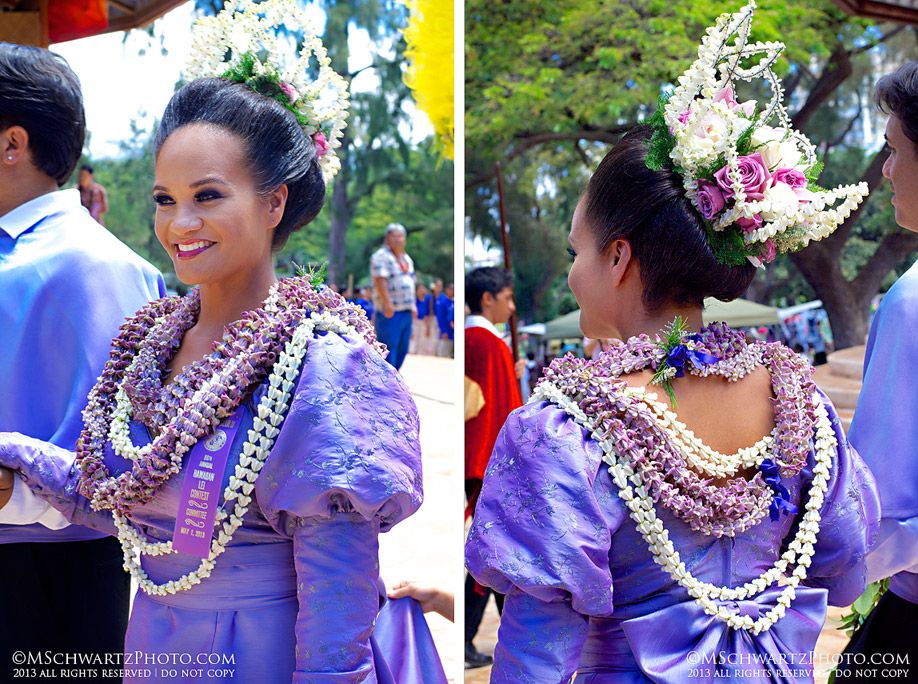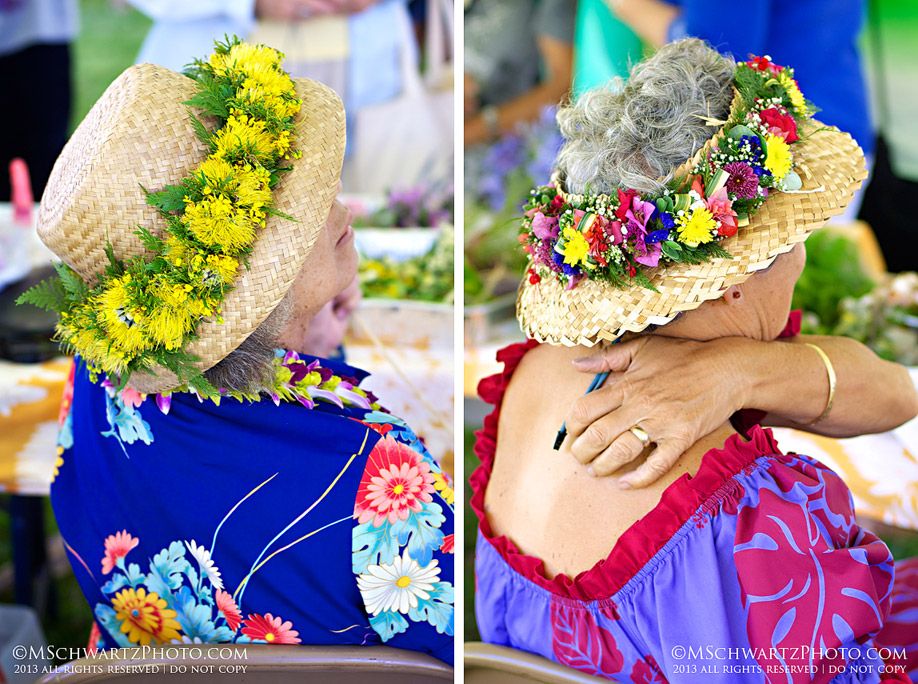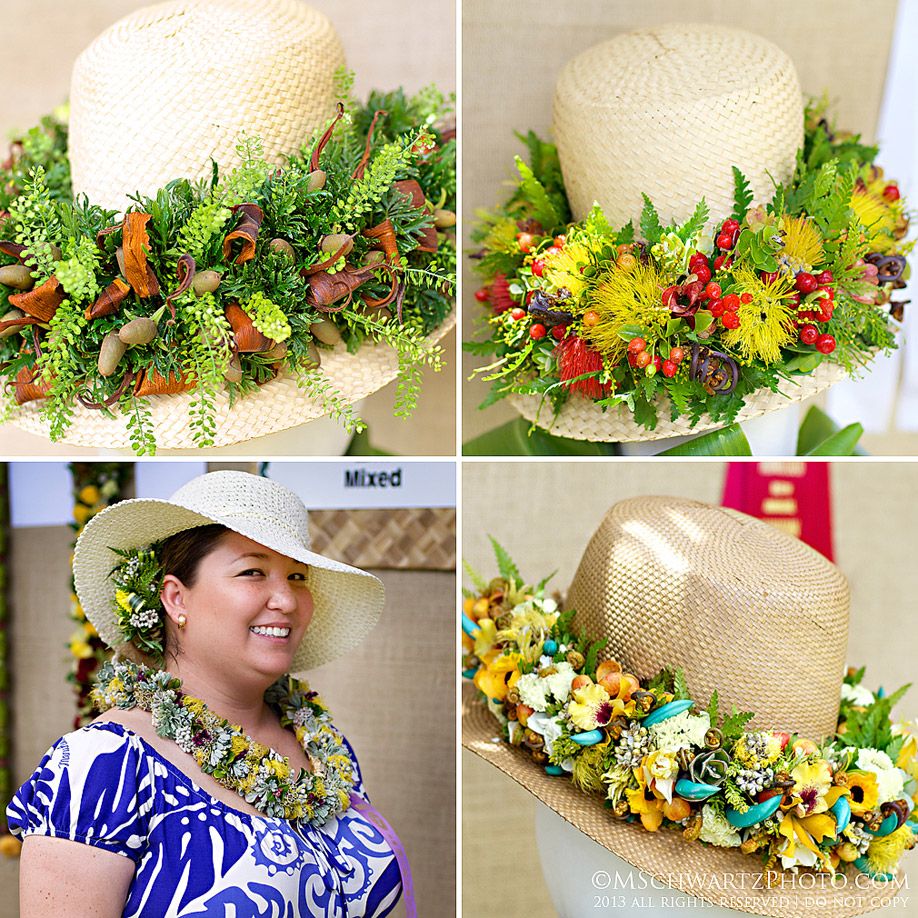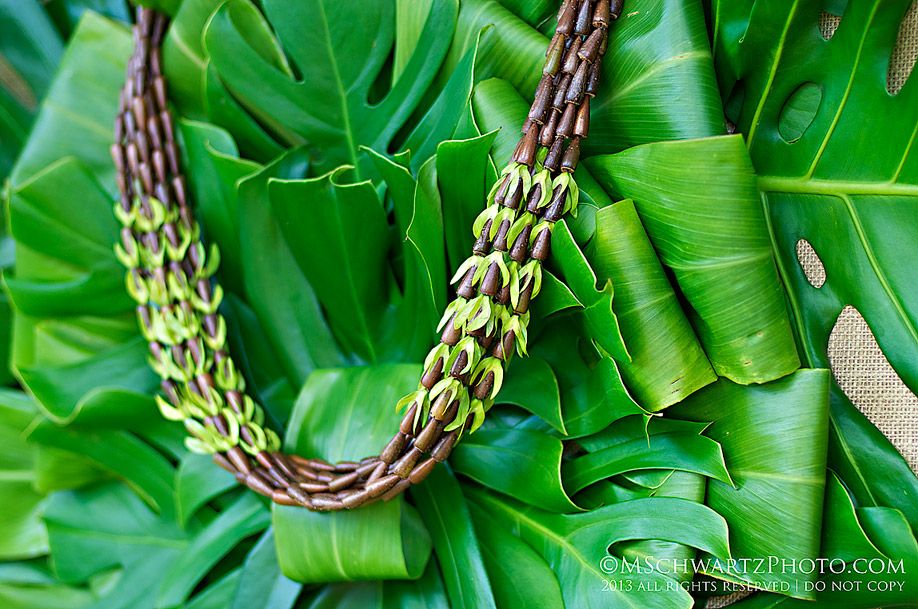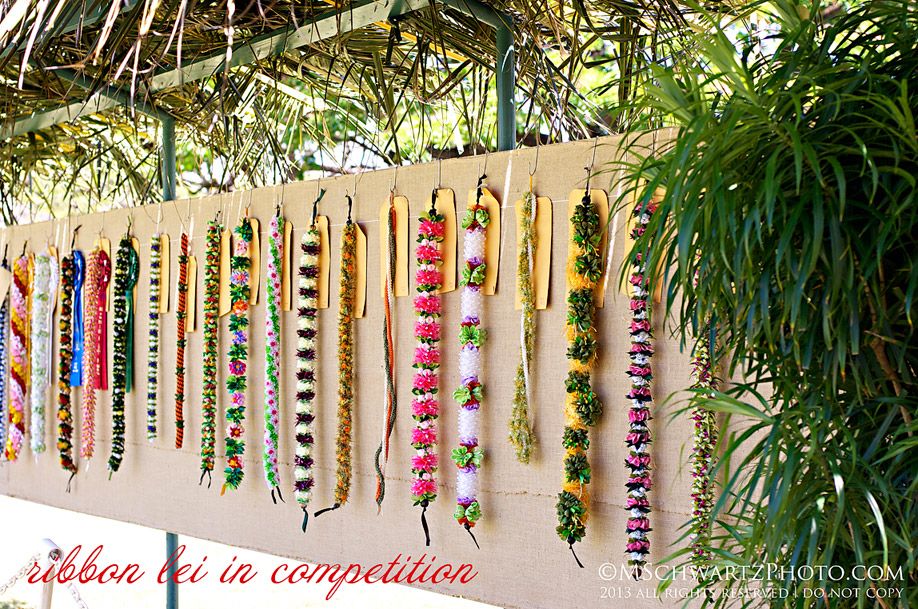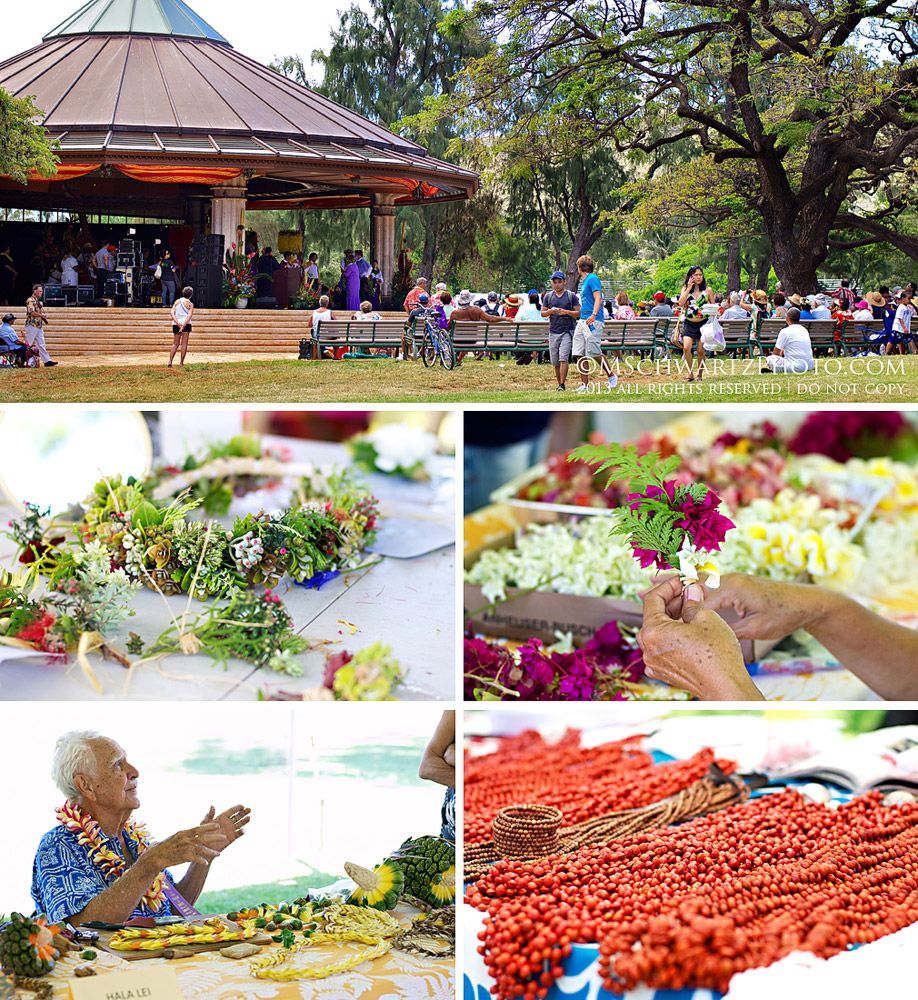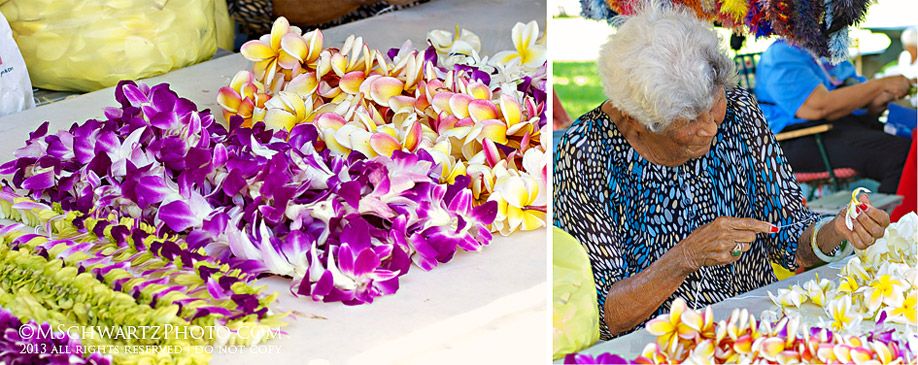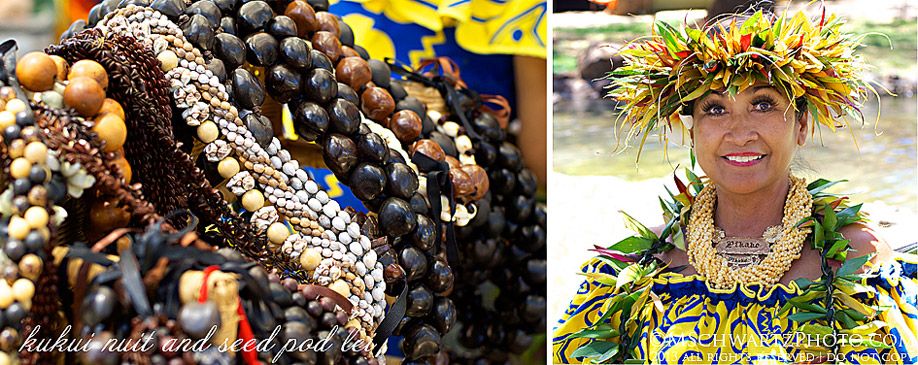I still remember the first time a fragrant lei was placed on my shoulders. It was made with plumeria (or frangipane) blossoms and, after taking it off at the end of the day, I draped it on the headboard above my bed, from where it continued to give scent the room all week long even as it withered. It was my very first trip to Hawai’i and I had flown to the Big Island all the way from Italy to attend a workshop on Hawaiian spiritual traditions. I made a scent memory that day, and for as much as I love lei made with the other wonderfully fragrant Hawaiian blooms like tuberose, gardenia, pikake, puakenekene and others, when I smell a plumeria lei I am instantly brought back to that moment, that day, that first magical week when I reconnected with my ancient home of Hawai’i Nei.
Together with Hula and the sweet sounds of slack key guitars, flower lei are recognized worldwide as one of the beautiful Hawaiian traditions. Lei are a sign of welcome and Aloha, and almost any excuse is good for a lei: to welcome a friend visiting the islands, for a birthday, a wedding, a dance, or any celebration, really. I have worn a haku lei (a head lei) on several birthdays, and neck leis for all sorts of occasions, sometimes just for the pleasure of one.
Lei (the word is both singular and plural) of different kinds (including ones made of candy and money) are piled high around the necks of graduating high school students, almost to the point of hiding their face.
Colorful, exotic and fragrant flowers abound in the islands, and the air is made sweet by them, something you immediately pick up on as you step outside of Honolulu airport.
Traditionally, the lei is created by the giver, who also gathers the flowers and materials necessary to make it, and then carefully sews or weaves them together along with their Mana (spirit, life force). When you give a lei you have made, you are sharing a part of you; and when you receive one, you receive a part of the Mana of the giver.
Lei Day, celebrated on May 1st no matter on what day of the week that happens to be, is a quintessential Hawaiian celebration that was initiated in the late 1920s by poet laureate Don Blanding, who at the time was working for the Honolulu Star Bulletin. What May Day is everywhere else became Lei Day in Hawai’i, and musician Ruth Hawk was inspired to compose the song that resonates throughout every Lei Day celebration in the islands: May Day is Lei Day in Hawai’i.
The first Lei Day was in 1927 and was celebrated in downtown Honolulu with just a few people wearing lei. Now at its 86th anniversary, It has grown to a full fledged festivity which takes place every year at Honolulu’s Kapiolani Park, near Waikiki.
The Royal Hawaiian band opens the program at 9am, followed by the gentle swaying of a Hula Hālau (a group of Hula dancers). The investiture ceremony for the Lei Queen (who is elected from a previous contest) and Court comes right after that. The Lei Queen and her court also open the Lei Contest exhibit to the public, something which happens around 12:30pm, after the judges have completed their evaluations for the winners in each category.
The line to view the lei in competition gets very long very fast, so you want to make sure to have a bottle of water, or, even better, a refreshing shave ice, and a hat and get in line early like I did.
Music and performances continue all afternoon both at the bandstand and other booths. Tents are visible all around, some shading lei makers giving demonstrations and enjoying some talk story with visitors, and some housing vendors selling lei of all types (flowers, kukui nuts, seed pods, knitted yarn, ribbons etc.), hats and other arts and crafts. Of course, there are also food vendors ready to satisfy your hunger with hot dogs, hamburgers and loco moco (plates of food involving a meat of some kind, usually pork, with a side of rice and macaroni salad), quench your thirst, and keep you refreshed with my one indulgence that day: colorful shave ice in my favorite flavors, lychee, lilikoi (passion fruit) and mango. And yes, it’s shave ice in Hawai’i, not shaved ice. 😉
All events are free and open to the public, and you will only need cash if you are purchasing from a vendor – though many do take credit cards.
Everyone wears a lei on Lei Day, around their necks, on a hat, on a wrist… sometimes more than one. The event is a true feast for the senses, especially for the eyes. It could be a therapeutic day: aromatherapy, color therapy and sound therapy all wrapped up in one. And the ocean is just a few yards away.
Most people also wear a hat and sunscreen, as it can get quite hot. I wore sunscreen, but did not have a hat that would not get in the way of my big camera, so I bought cute straw one from one of the vendors. It was some of the best money I ever spent as it protected my head from the noonday sun while I waited in line for the exhibit to open.
The lei in competition are many and extremely beautiful. If I were a judge I would have a hard time choosing the winners. However, despite oooh-ing and aaah-ing at each lei, when I came up to the ones with ribbons pinned to their right (first place: blue; second place: red; third place: white) I knew why they had won: they were exquisite.
What you see in these images are details of some of the best in competition.
The competing categories are many and include a contest dedicated to lei made by keiki (children). Though the theme varies each year, I have always seen groups of competing lei in color categories. Each color represents one of the islands: ‘Ula’ula (red) for the island of Hawai’i (also known as Big Island), whose flower is ‘Ōhi’a Lehua (Metrosideros macropus), the most traditional of all Hawaiian flowers; Pala luhiehu (golden yellow) or Melemele (yellow) for the island of O’ahu, whose flower is ‘Ilima (Sida fallax); ‘Ōma’oma’o (green) for the island of Moloka’i, whose flower is Kukui (Aleurites moluccana); ‘Alani (orange) represents the island of Lāna’i, with Kauna’oa (Cuscuta sandwichiana) as its flower; Hinahina (silvery grey) for the island of Kaho’olawe, with Hinahina (Heliotropium anomalum) also the name of the flower; Poni (purple) for the island of Kaua’i, whose flower is Mokihana (Pelea anisata); Ke’oke’o (white) is the color of Ni’ihau, with a Pūpū, or shell, as its symbol (Ni’ihau is the only island with a shell instead of a flower or plant as its symbol).
Then there is the best in show, which this year was the stunning and unusual piece you see below.
On May 2nd, the contest lei are taken to Mauna ‘Ala, the royal Mausoleum in Honolulu. The ceremony begins at 9am and the public is invited to participate by draping the lei on the crypts and tombs of Hawaiian Ali’i (royals & nobility).
For more information about Lei Day, how to participate in the contest, on lei making classes, and generally on Hawai’i botanicals you can refer to these websites:
www1.honolulu.gov
www.botany.hawaii.edu
All images from the Lei Day event were taken with a hand held Nikon D2X and Nkkor AF 50mm 1:1.4 D lens. With all that light, my Manfrotto tripod was not needed so it sat waiting in the trunk of my red Mini.
Guest blogger: Monica Schwartz
Website: www.MSchwartzPhoto.com
Blog: www.MSchwartzPhoto.com/blog
Travel blog: www.MyOutOfBounds.com
Food blog: www.FoodJourney.com
About Monica Schwartz:
Monica Schwartz is an Italian expat and professional photographer living in Hawai’i. She specializes in portrait, food and travel photography and shares her work, explorations and passions through her website and three blogs which all interlink with one another. You can start from any one and you will find the rest.













